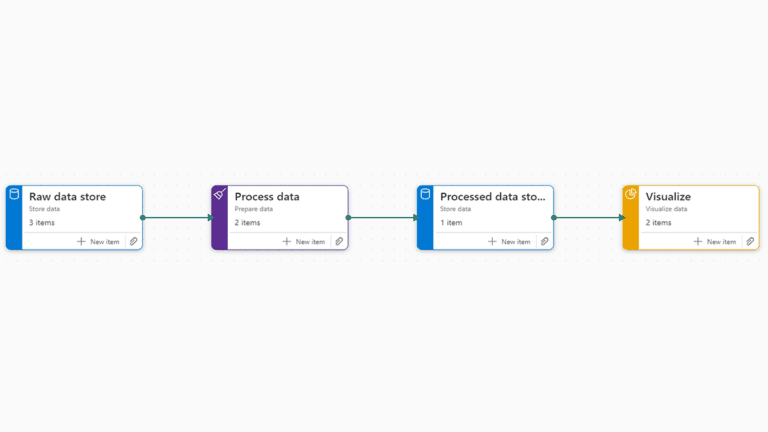In today’s fast-paced business environment, becoming a data-driven organization is no longer optional but a necessity. Companies that leverage data effectively are better positioned to make informed decisions, anticipate market trends, and stay ahead of competitors. This article outlines the critical steps to transform your company into a data-driven organization, ensuring that data becomes the backbone of decision-making processes and that no one can afford to ignore its importance.
1. Establish a Data-Driven Culture
Leadership Commitment
The transformation begins at the top. Leadership must champion the use of data and demonstrate its value through their actions. Executives and managers should integrate data into their decision-making processes and openly discuss data insights in meetings. This sets a precedent for the rest of the organization.
Clear Vision and Communication
Define a clear vision for what being data-driven means for your company. Communicate this vision effectively across all levels of the organization. Ensure that every employee understands the importance of data and how it contributes to the company’s success.
Training and Development
Invest in training programs to enhance data literacy across the organization. Employees should be equipped with the skills to interpret data, use data analytics tools, and understand basic statistical concepts. Continuous learning opportunities should be provided to keep skills up-to-date.
2. Build a Robust Data Infrastructure
Data Collection and Management
Implement systems for efficient data collection and management. Ensure data is collected from all relevant sources, including customer interactions, operational processes, and market research. Utilize data management platforms to store, organize, and retrieve data efficiently.
Data Quality
Ensure high data quality by implementing stringent data governance practices. Regularly audit data for accuracy, consistency, and completeness. Cleanse data to remove inaccuracies and standardize formats. High-quality data is essential for reliable analysis and insights.
Advanced Analytics and Tools
Invest in advanced analytics tools and technologies. Equip your data science and analytics teams with the latest tools for data visualization, predictive analytics, and machine learning. These tools enable deeper insights and more sophisticated analysis.
3. Integrate Data into Decision-Making Processes
Data-Driven KPIs
Establish key performance indicators (KPIs) that are rooted in data. These KPIs should be tied to business objectives and monitored regularly. Use data dashboards to provide real-time visibility into performance metrics, helping teams stay aligned with goals.
Data in Daily Operations
Embed data into daily operations. Encourage teams to use data to inform their daily tasks, whether it’s marketing campaigns, sales strategies, or product development. Data should be a fundamental component of every operational decision.
Decision-Making Frameworks
Develop decision-making frameworks that prioritize data. For example, implement decision trees or scenario planning that relies on data inputs. Encourage the use of data-driven hypotheses and experimentation to validate decisions.
4. Foster a Collaborative Environment
Cross-Functional Teams
Create cross-functional teams that bring together diverse skill sets, including data scientists, analysts, business leaders, and IT professionals. This collaboration ensures that data insights are aligned with business needs and can be acted upon effectively.
Open Data Access
Promote a culture of data transparency by providing open access to data across the organization. Implement data sharing policies that allow teams to access and use data while ensuring data security and privacy. This openness encourages collaboration and innovation.
Success Stories
Highlight and celebrate success stories where data-driven decisions have led to positive outcomes. Share these stories widely to demonstrate the value of data and inspire others to follow suit.
5. Implement Data Governance and Ethics
Data Governance Framework
Establish a data governance framework that defines policies, procedures, and roles for managing data. This framework should address data ownership, data quality, and data security. Regularly review and update the framework to adapt to evolving business needs and regulatory requirements.
Ethical Considerations
Adopt ethical guidelines for data use. Ensure that data is used responsibly and transparently. Address issues such as data privacy, consent, and bias. Promote ethical data practices to build trust with customers and stakeholders.
6. Measure and Adapt
Continuous Improvement
Continuously measure the impact of your data initiatives. Use metrics such as the adoption rate of data tools, the accuracy of predictions, and the business outcomes of data-driven decisions. Use these metrics to identify areas for improvement and adjust strategies accordingly.
Feedback Loops
Create feedback loops to gather input from employees on data processes and tools. Use this feedback to refine data practices and address any challenges. Engaging employees in this process helps to ensure that data initiatives are practical and effective.
Transforming into a data-driven organization requires a concerted effort across various dimensions, including culture, infrastructure, decision-making processes, collaboration, governance, and continuous improvement. By following these steps, companies can embed data at the core of their operations, ensuring that decisions are informed, strategic, and aligned with business goals. Ultimately, a data-driven approach empowers organizations to navigate the complexities of the modern business landscape with confidence and agility.



